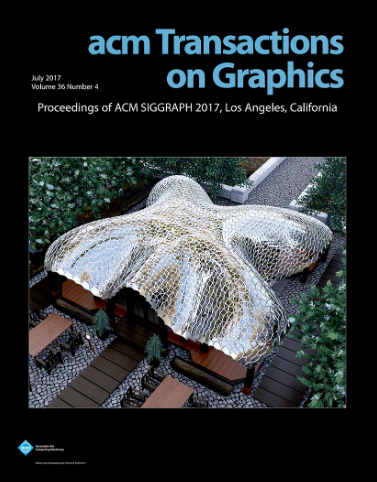散度的伯恩斯坦界
IF 9.5
1区 计算机科学
Q1 COMPUTER SCIENCE, SOFTWARE ENGINEERING
引用次数: 0
摘要
系统地模拟镜面光传输需要对包含允许路径的三角形元组进行穷举搜索。考虑到枚举所有组合的效率极低,我们通过随机采样这样的元组来显着减少搜索域。挑战在于设计适当的采样概率,使噪声水平可控。我们的关键见解是,通过限定每个三角形元组在给定位置贡献的辐照度,我们可以对具有潜在高贡献的三角形元组子集进行采样。尽管低贡献元组的概率可以忽略不计,但总体方差仍然很低。因此,我们推导出由每个三角形元组投射的焦散的位置和辐照度边界,在Bernstein基础上引入有理函数的边界性质。当将位置和辐照度表达式形成有理函数时,我们通过剩余变量处理非有理部分,以保持边界有效性。最后,我们通过优化方差的上界(仅使用位置和辐照度边界表示)来仔细设计采样概率。三角元组的边界驱动抽样本质上是无偏的,即使没有防御抽样。它可以与局部三角形域内的各种无偏和偏寻根技术相结合。大量的评估表明,我们的方法能够快速可靠地呈现复杂的焦散效应。然而,我们的方法对于不超过两个镜面顶点是有效的,其中复杂性随三角形数量的次线性增长,随发射器数量的线性增长,并且不考虑菲涅耳和可见性项。我们还依靠参数来控制细分。本文章由计算机程序翻译,如有差异,请以英文原文为准。
Bernstein Bounds for Caustics
Systematically simulating specular light transport requires an exhaustive search for triangle tuples containing admissible paths. Given the extreme inefficiency of enumerating all combinations, we significantly reduce the search domain by stochastically sampling such tuples. The challenge is to design proper sampling probabilities that keep the noise level controllable. Our key insight is that by bounding the irradiance contributed by each triangle tuple at a given position, we can sample a subset of triangle tuples with potentially high contributions. Although low-contribution tuples are assigned a negligible probability, the overall variance remains low. Therefore, we derive position and irradiance bounds for caustics casted by each triangle tuple, introducing a bounding property of rational functions on a Bernstein basis. When formulating position and irradiance expressions into rational functions, we handle non-rational parts through remainder variables to maintain bounding validity. Finally, we carefully design the sampling probabilities by optimizing the upper bound of the variance, expressed only using the position and irradiance bounds. The bound-driven sampling of triangle tuples is intrinsically unbiased even without defensive sampling. It can be combined with various unbiased and biased root-finding techniques within a local triangle domain. Extensive evaluations show that our method enables the fast and reliable rendering of complex caustics effects. Yet, our method is efficient for no more than two specular vertices, where complexity grows sublinearly to the number of triangles and linearly to that of emitters, and does not consider the Fresnel and visibility terms. We also rely on parameters to control subdivisions.
求助全文
通过发布文献求助,成功后即可免费获取论文全文。
去求助
来源期刊

ACM Transactions on Graphics
工程技术-计算机:软件工程
CiteScore
14.30
自引率
25.80%
发文量
193
审稿时长
12 months
期刊介绍:
ACM Transactions on Graphics (TOG) is a peer-reviewed scientific journal that aims to disseminate the latest findings of note in the field of computer graphics. It has been published since 1982 by the Association for Computing Machinery. Starting in 2003, all papers accepted for presentation at the annual SIGGRAPH conference are printed in a special summer issue of the journal.
 求助内容:
求助内容: 应助结果提醒方式:
应助结果提醒方式:


